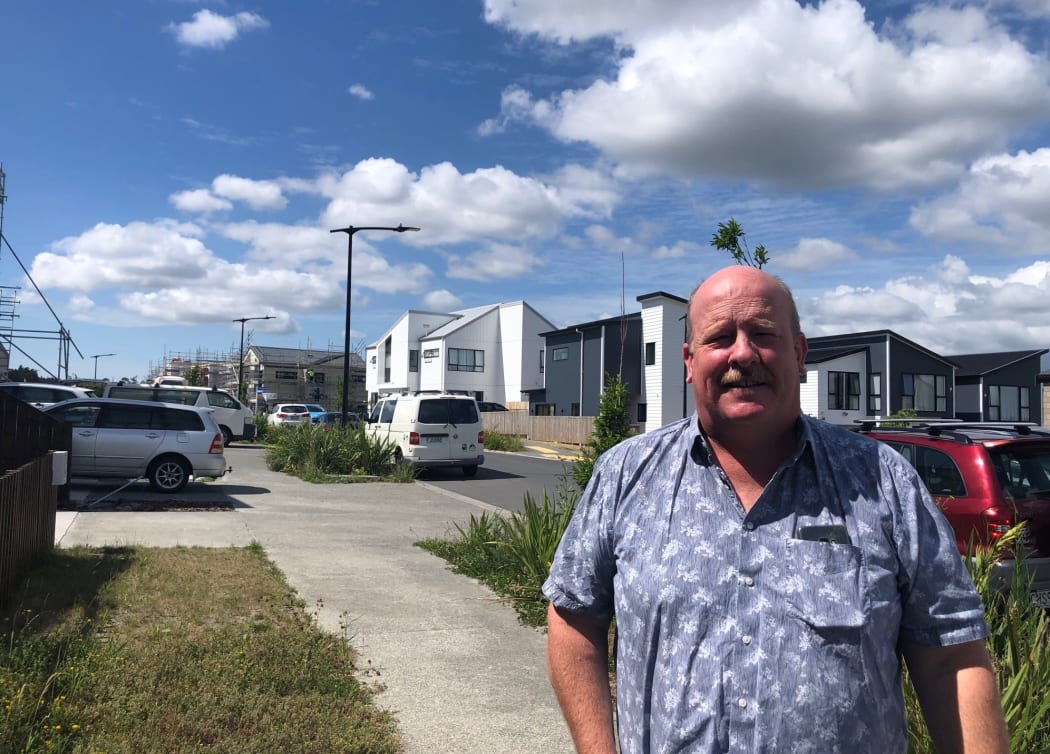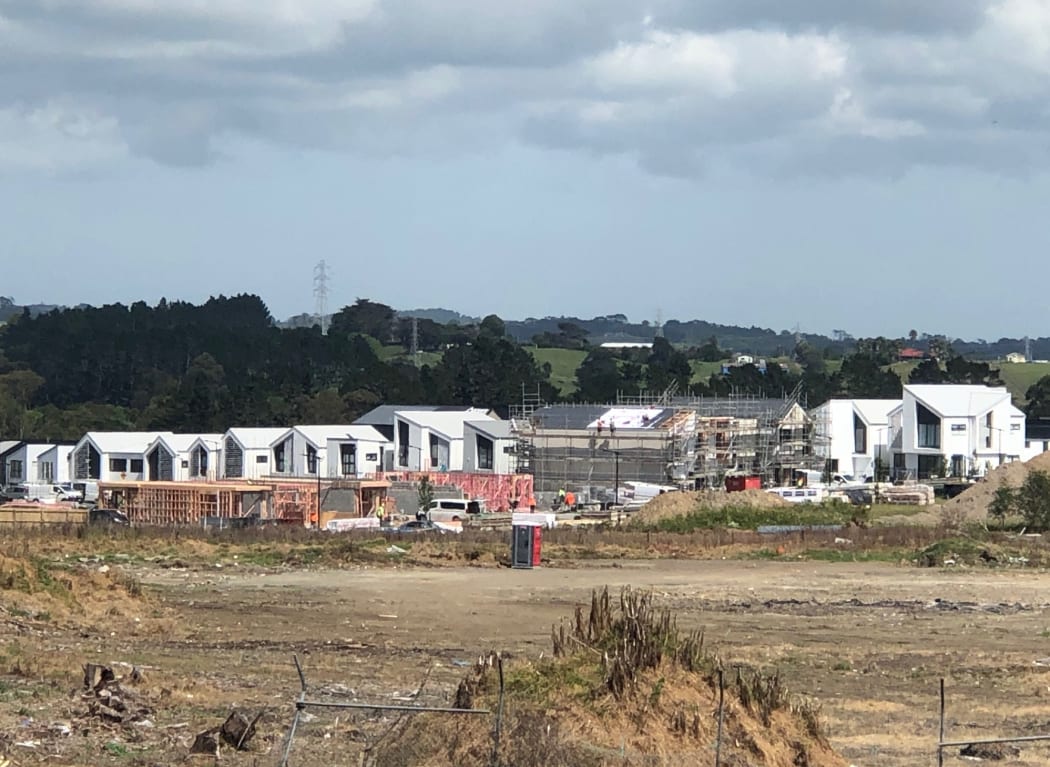
John Tookey with a brand new housing development near Westgate going up behind him. Photo: Sharon Brettkelly
Shipping gridlock, empty shop shelves, a depleted workforce, record numbers of building permits and the relentless rise of house prices have all shaped the year in the building industry.
"It's been a grind," says Julien Leys, chief executive of the Building Industry Federation.
"It's a curate's egg," says AUT's professor of construction management, John Tookey. “Good in parts.”
But the industry will emerge stronger and better equipped for future shocks, they say.
Today, The Detail's Sharon Brettkelly meets Leys at his Auckland city office and Tookey at a new development in west Auckland, where farmland is rapidly turning into housing.
"One of the nice things about the development you've got here," says Tookey, "it’s not a monoculture, so you haven't got everything all the same because those sorts of chocolate box-type of houses are not necessarily what people want to have."
Some are traditionally built, but many of them have prefabricated panels.
"There's that increasing utilisation of prefab solutions, which is going to ultimately deliver houses faster, of a higher quality, and of a more high performance capability, just in terms of thermal insulation."
Nearly 50,000 consents for dwellings have been issued this year. Not all will be built because of the dire shortage of labour and materials, says Tookey.
"It’s been very difficult because the lockdown effects have massively impinged on the productive capacity of the sector as a whole."
On the flipside is the huge injection of money into the economy by the government which has helped drive up house prices. In the end, he says, the customer pays.

A new housing development underway near Westgate in Auckland. Photo: Sharon Brettkelly
Tookey explains to The Detail how those factors affect the development surrounding him in west Auckland. With 16-17 percent year-on-year growth in new housing in the city comes growing pains such as weak infrastructure. That’s evidenced by the daily traffic snarl-ups of new homeowners trying to get to work.
Julien Leys says there are the signs that the supply crisis is easing and delays in getting goods will improve by next July or August, but "not necessarily pricing though".
The cost of materials has been rising every two weeks and people have been caught out, losing their homes and being forced to walk away from their businesses, he says.
One of the most difficult challenges for Leys this year was tackling the domestic building supplies shortage when Auckland was at level 4 lockdown, while the rest of the country went to level 3.
"That split we had never anticipated, and because Auckland is the engine room powerhouse for New Zealand in terms of the building supply chain we couldn't move anything out of the warehouses to the rest of the country."
He helped negotiate a government exemption to allow a few materials to go over the border but he says it has taught the industry how to do it better in the event of another lockdown.
"We've really had to also make adjustments so that we're diversifying our risk away from just relying on one particular supplier and one market," says Leys.
And they've turned to local manufacturers "which is another positive".

PIJF Photo: .

